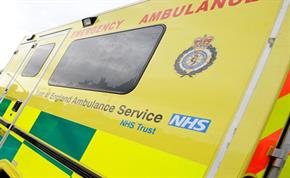
The End of Shift trial will enter its 4th and final phase on 8 November. The team have put together some FAQ’s to provide staff with more information regarding this phase of the trial
What is IX?
RRVs and DSAs are booked into ‘Intelligent X-Ray’ (usually referred to as simply ‘IX’) status when the travel time back to base is expected to result in a late finish. Its use is detailed in ESOP01, which can be found on EAST24. Currently when IX a resource can only be dispatched on Category 1, predicted Category 1 or Hot 1 back-ups. For example, if a DSA is clearing at a hospital that is 45 minutes away from base, and they are 45 mins or less from the end of their shift, they should be booked IX.
What is the IX trial testing?
DSAs and RRVs that would be IX will be placed at Level 0 as per the current EoS trial and will only be liable to the same code-sets as trialled in the End of Shift trial, i.e. Code 9s, Echo codes and maternity C1s. It is expected that the protection provided by the IX Trial should have a significant impact on reducing the longest late finishes, i.e. for crews that are out of area or a long way from base (i.e., anything over 30 minutes).
We expect to see:
How is journey time calculated?
We recommend that crews use the Google Maps app on their Trust iPad to calculate journey times prior to discussion with their dispatcher.
Where and when is the trial taking place?
The trial will take place concurrently with Phase 4 of the End of Shift trial, i.e. 8-29 November and will run across all dispatch desks routinely managed by Norwich EOC, i.e.:
TG9 – Norfolk West
TG10 – Norfolk East
TG11 – Waveney
TG14 – Cambridgeshire South
TG15 – Cambridgeshire North
Will I need to ask control to place me Level 0?
Not necessarily, but it is recommended to call Control prior to clearing and ask to be put “Level 0 + extra codes” as part of the IX Trial.
What calls could I be dispatched to when ‘Level 0 + extra codes’?
The same as in the End of Shift trial, i.e.:
What are ‘Echo codes’?
These are explained in the End of Shift trial FAQ (follow the link at top of this page).
Do I have to be out of area?
No. The only criteria is that your journey time back to base will result in a late finish.
Why is this trial run by dispatch group rather than locality/sector?
For several reasons:
What will happen whenever AOC is short-staffed, and a dispatch desk moves to a different AOC?
Bedford and Chelmsford AOCs will both be briefed on the trial. Should any of the trial dispatch desks be temporarily transferred to another AOC, that talk-group will remain in the trial.
Will the trial go Trust-wide?
As with the End of Shift trial, any expansion will depend on the results of this initial trial phase.
Will the trial continue in enhanced REAP and Surge levels?
The End of Shift trial was unaffected by REAP and continued despite the Trust being in REAP4 throughout. There is no reason why this should change for the IX trial.
The trial was paused on several occasions towards the end of Phase 1 of the EoS trial and has been briefly paused twice during Phase 3. The ESOP for the EoS trial has been amended, changing pausing the trial at Surge 4 from being an automatic action by AOC, to an option open to the Strategic Commander. This policy will also apply in the ESOP for the IX trial.
How do I escalate a concern?
Concerns can be raised via the normal pathways (e.g. line management, DATIX). We encourage anyone with a question/concern/suggestion etc. to email the trial team at eostrial@eastamb.nhs.uk. AOC staff are encouraged to use the #EoStrial keyword in the CAD notes, ideally with some explanatory comments: using the keyword will ensure that the trial and patient safety teams review the call in their daily meeting.
Won’t this present a risk to patients?
Both the EoS and IX trials are part of an iterative process aiming to redress the balance, by incremental stages, between patient safety and staff safety and wellbeing. Late finishes are not just an inconvenience: they contribute to fatigue, and fatigue contributes to increased risk of clinical error, road traffic accidents and staff sickness. The trial process aims to evidence benefits to staff whilst also monitoring the risk to patients from potential delayed response.
You can read the introduction to this phase here. Please also see the End of Shift trial FAQs.
Published 3rd November 2021